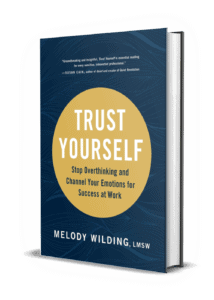It’s 3 p.m., and you’re knee-deep in an afternoon energy slump.
You head towards the office kitchen to grab a glass of water where you’re encountered by a box of treats that seems to be calling your name. “Just one,” you swear. But that’s the third time you’ve given in to your sweet tooth this week.
As a smart, ambitious person, you know bad habits keep you from reaching your goals. You know you’re capable of self-control. Yet, despite your best efforts, you’ve been unable to change.
Whether it’s mid-day snacking, procrastinating, or skipping workouts, feeling powerless in the face of bad habits can really take a toll on your motivation, even your self-esteem.
What if it’s not a lack of willpower that’s to blame? What if the advice you’ve been given about how to “break” a bad habit is actually misguided?
If you’ve been trying different methods over and over again but nothing’s working, it’s time for a new approach that leverages the science of behavior change.
The Psychology of Bad Habits
You can spend hours researching life hacks. However, if you don’t first understand the psychology driving habits, you’ll never see any real success.
When you break it down, habits are comprised of three distinct stages:
1. Cue
2. Routine
3. Reward
In the mid-day munchies example, the cue is fatigue. This triggers a routine: getting up and heading to the kitchen. The reward? Yummy goodness that gives you a temporary energy boost.
It turns out that the habit loop is incredibly powerful and is something that has been hardwired into our psyches.
It also helps explains exactly why habits are so hard to shake. The truth is, we actually never break bad habits, rather “bad” behaviors are replaced with more positive alternatives.
Putting the Habit Loop to Work
If you’re ready to kick bad habits for good, here’s three steps for leveraging the habit loop to finally change your behavior.
Step 1: Identify the stages
First identify the cue, routine, and reward that lead to your habit. Look at the circumstances surrounding the behavior including the time of day, who you’re with, and what emotions you’re feeling.
For example, recognize how after a tough day at work (cue), you come home and plop down on the couch (routine). Flash forward and you’ve finish an entire series on Netflix (reward). The downside is you’ve also squandered free time meant to be used for working on your side business.
Step 2: Explore alternatives
Now that you have a clear breakdown of what’s happening at each stage of your habit loop, brainstorm healthier routines that will produce the results you want.
What alternative behaviors might provide comparable reward to the one you are trying to eliminate? What else would give you a sense of accomplishment, happiness, relaxation — whatever core need your current “bad habit” is satisfying?
Create a list of options. Could you swap out your open-ended Netflix binge for brief meditation or a walk with your partner? Focus on new routines that will help you decompress after a stressful day (the cue) and leave you in a positive frame of mind to get freelance work done (reward).
Step 3: Commit to change and tweak as you go
Now it’s time to experiment with subbing in new routines to get a sense of what works best for you.
Make do-able commitments to test drive new routines and approach it as a series of experiments. Maybe you try a post-work meditation for two weeks and find it’s not for you. After more testing, you may find more vigorous exercise is what helps you get in zone.
Step 4: Anticipate setbacks
Behavior change is hard. No one is immune from the occasional slip-up, so when this happens, don’t beat yourself up or retreat into negative self-talk.
Instead, make your habit loop bulletproof: anticipate and plan for setbacks. If you’re trying to stick to a diet, think through situations that might challenge your healthy eating habits such a fancy business dinners, traveling for work, or high-stress times.
Once you learn how to work within the psychology of habits, rather than against it, chances are you’ll find greater success in beating negative behaviors once and for all.









